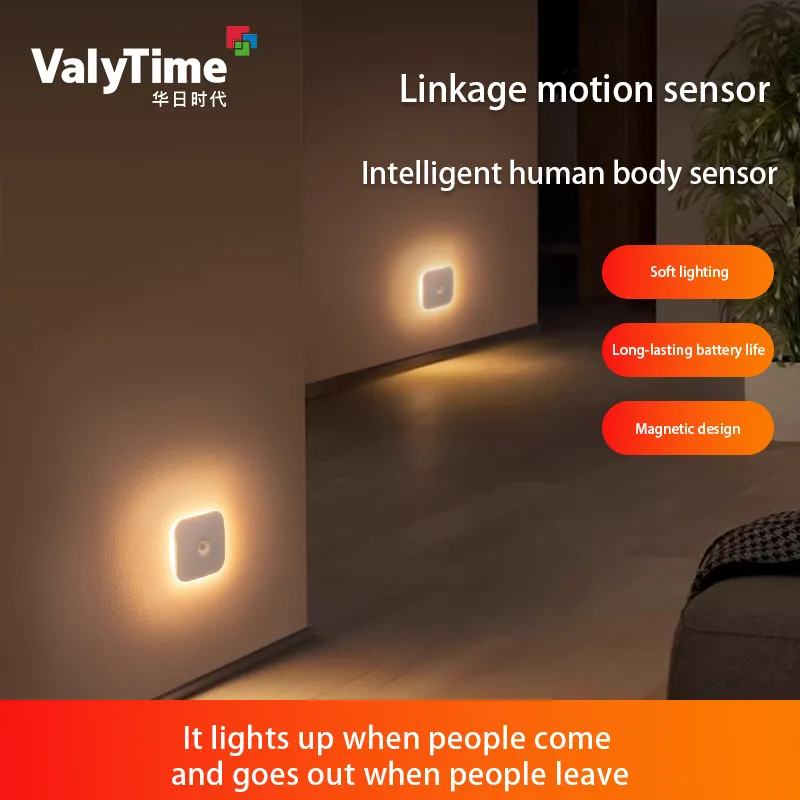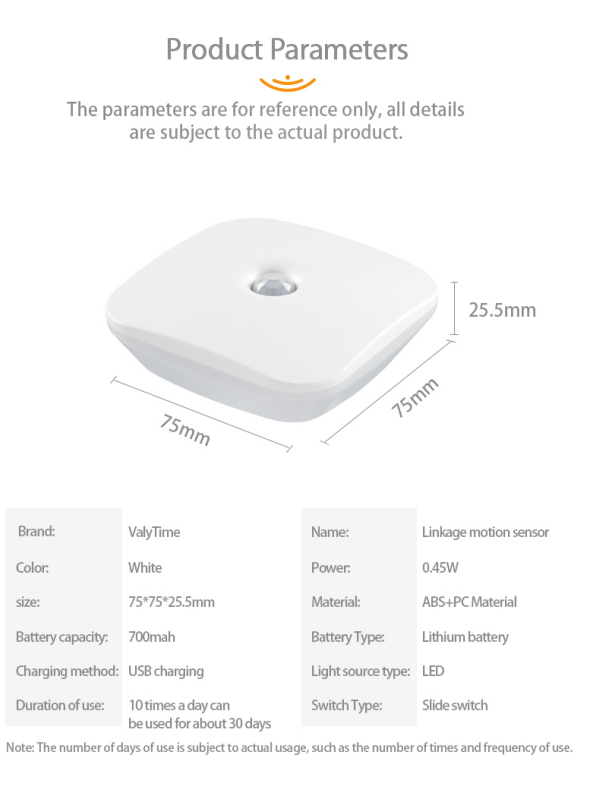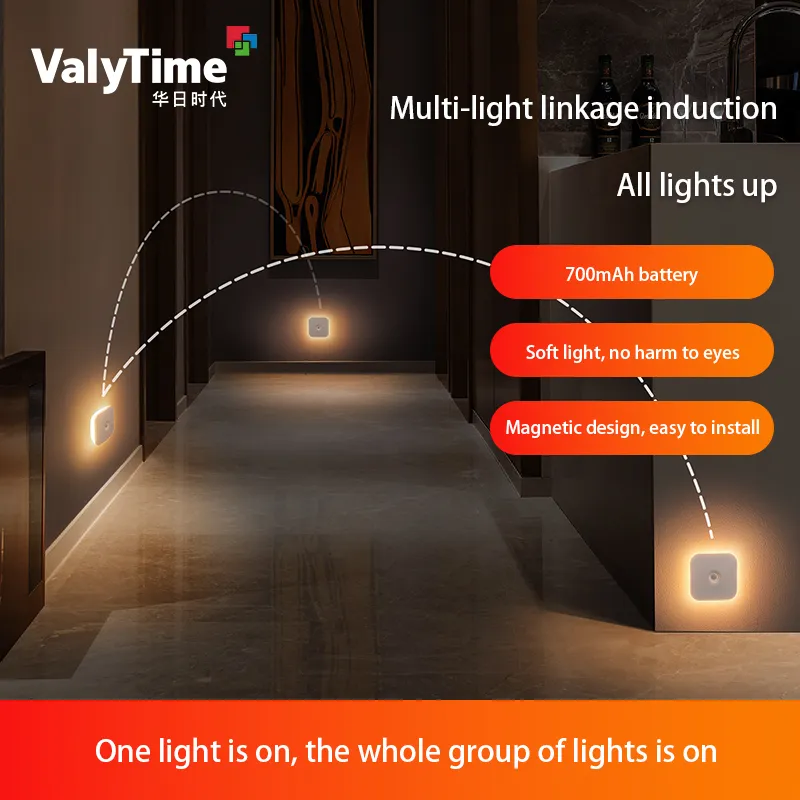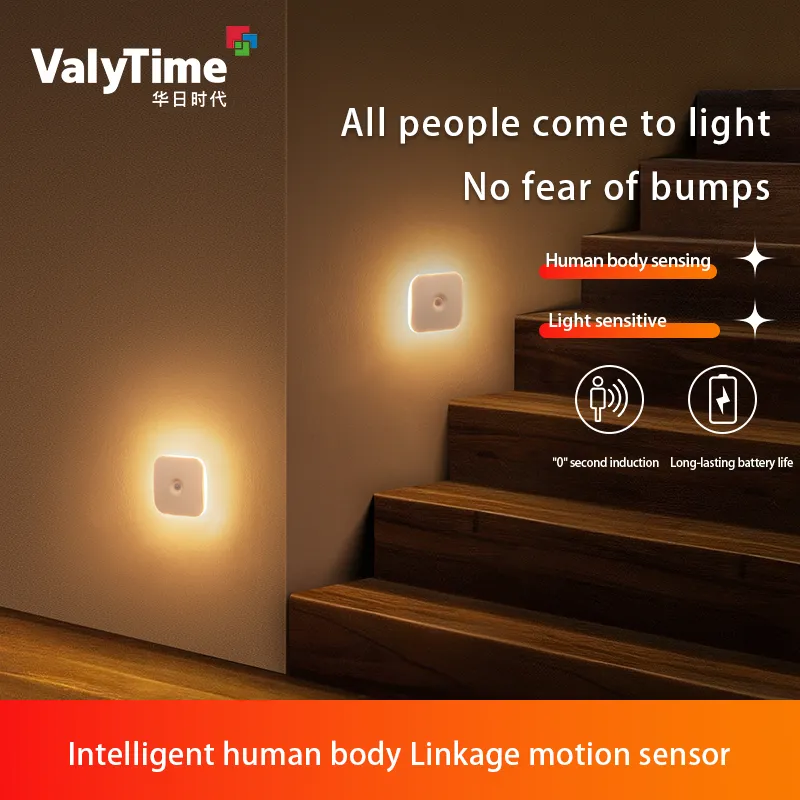What Can Interfere with Motion Sensor Night Lights?
The widespread use of motion sensor night lights has brought significant convenience to our daily lives. They use infrared or ultrasonic technology to automatically activate when they sense human motion, providing energy-efficient and efficient lighting. However, while motion sensor night lights are designed to enhance convenience and safety, in some cases these lights may not function properly or may frequently trigger falsely. This can be caused by a variety of external or internal factors that can interfere with the function of these lights.
In this article, we will delve into the various factors that can interfere with the proper functioning of motion sensor night lights and how to avoid or mitigate these interferences to ensure efficient operation.

Motion Sensor Night Lights—Everything You Need to Know
Before understanding interference factors, we first need to understand how motion sensor night lights work. Motion sensor night lights rely on two primary sensors: infrared and ultrasonic, each of which detects motion in different ways.
1. Infrared Sensors
Infrared sensors operate based on the principle of thermal radiation. They detect infrared radiation emitted by objects (usually humans or animals). Because human body temperature is relatively high, when a person moves within the sensing range of a light, the sensor senses their heat, triggering the light to turn on. If no motion is detected for a certain period of time, the sensor turns the light off.
2. Ultrasonic Sensor
An ultrasonic sensor detects motion by transmitting ultrasonic waves and receiving their reflected signals. When an object enters the sensor's sensing range, the reflected ultrasonic waves change, allowing the sensor to determine whether an object is present.
The common goal of these two sensors is to sense changes in the surrounding environment and automatically turn the light on or off. In theory, they should be very accurate, but sometimes they can be affected by external interference, affecting their normal operation.

What can interfere with a motion sensor night light?
Factors that can interfere with motion sensor night lights:
1. Temperature fluctuations and heat sources
2. Air flow and swaying curtains
3. Electromagnetic interference
4. Light fluctuations
5. Sensitivity setting issues
6. Humidity and moisture
7. Animal interference
1. Temperature fluctuations and heat sources
Because many motion sensor night lights use infrared sensing technology, ambient temperature fluctuations can significantly affect them. Infrared sensors rely on temperature differences to detect motion. Significant temperature fluctuations in the environment, especially heat sources similar to human body heat, can interfere with the sensor's operation.
For example, items such as air conditioners, heaters, and heaters near the sensor can cause excessively high or low temperature fluctuations in the sensing area, causing the sensor to falsely detect motion. The heat generated by these devices can even cause the sensor to believe a new object has entered, triggering the light to turn on.
2. Air flow and swaying curtains
The impact of air flow on infrared sensor night lights cannot be underestimated. Devices such as fans and air conditioners can create air flow, causing curtains, fabrics, or other lightweight objects to sway. These slight movements can be misinterpreted by infrared sensors as human motion or the movement of other objects, causing the light to stay on unnecessarily.
Furthermore, even a fan or natural airflow can cause the curtains to sway slightly, misleading the sensor into interpreting motion. One way to address this issue is to ensure that the sensor is placed away from these influences, avoiding direct exposure to air currents.
3. Electromagnetic Interference
Modern homes often have multiple electrical devices running simultaneously, such as microwave ovens, wireless routers, and mobile phones. These devices generate a certain amount of electromagnetic radiation when operating. These electromagnetic waves can interfere with the normal operation of motion sensor night lights. This is especially true for ultrasonic sensors, whose signals are transmitted via electromagnetic waves. Therefore, electromagnetic interference can affect the sensor's signal processing, causing the light to turn on accidentally or not turn off.
Electromagnetic interference can come from many sources, including household appliances such as televisions, radio transmitters, microwave ovens, mobile phones, and computers. These devices can cause the sensor to misinterpret environmental changes, thus affecting the light's normal operation. To avoid electromagnetic interference, users should avoid placing motion sensor night lights near high-power appliances or try to install the light in an area with low electromagnetic radiation.
4. Light Changes
Some motion sensor night lights not only detect motion but also turn on and off based on ambient light levels. For example, a night light may only activate when ambient light is low. This is known as a "light sensor" feature. In this case, strong external light sources, such as street lights, sunlight, or other indoor lighting, may interfere with the motion sensor, causing it to mistakenly believe the environment is bright enough and thus not activate the night light.
If your motion sensor night light doesn't automatically activate in dark environments, check whether there is an excessively strong light source directly shining on the sensor. Alternatively, you can adjust the light sensitivity setting to ensure it activates in appropriate lighting conditions.

5. Sensitivity Issues
Some motion sensor night lights feature a sensitivity adjustment feature. Users can adjust the sensor's motion detection range to suit their needs. Excessively high sensitivity can cause the light to activate accidentally, as even very slight motion (such as floor vibration, door shaking, or wall vibration) can trigger the light to activate.
At the same time, low sensitivity may prevent the sensor from detecting distant or subtle movements, causing the light to not turn on when needed. To avoid interference caused by sensitivity, users should adjust the sensor's sensitivity according to their actual usage scenario.
6. Humidity and Water Vapor
Motion sensor night lights are generally designed for normal indoor environments. If installed in a bathroom or other humid environment, humidity and water vapor may affect sensor performance. Excessive humidity can cause sensor malfunctions. For example, humidity can short-circuit the sensor's contacts, causing the sensor to mistakenly interpret motion as occurring and cause the light to turn on unnecessarily.
To avoid this problem, ensure that the sensor night light is installed away from excessively humid environments, especially in areas like bathrooms or kitchens. Choose a light specifically designed for use in humid spaces.
7. Animal Interference
If you have pets at home, especially small animals like cats and dogs, their movements may interfere with the motion sensor. Animals have a similar body temperature to humans and are often within the sensor's sensing range. The motion sensor may mistakenly interpret animal activity as human activity, triggering the light.
This problem is usually resolved by reducing the sensor's sensitivity, adjusting the mounting location, or choosing a sensor optimized for animal motion.

How can I avoid or minimize interference with a motion sensor night light?
To avoid interference with a motion sensor night light, you can take the following measures:
• Adjust the sensor's location: Ensure the sensor is placed where it is not easily disturbed by air flow, swaying curtains, or electrical appliances.
• Reduce sensitivity: Adjust the sensor's sensitivity based on the actual situation to avoid false triggering.
• Avoid strong light sources: Avoid installing the motion sensor night light in areas exposed to strong light sources.
• Clean the sensor regularly: Keep the sensor clean to prevent dust and dirt from affecting its performance.
• Choose the right lighting fixture: Use a moisture-safe sensor night light in humid environments and select the appropriate sensor for areas where pets are active.
What types of LED lights does Huari manufacture and export?
Our catalog covers a complete range of LED products for household and commercial use. We produce night lights, vanity wall lamps, recessed downlights, slim panel lights, adjustable track lights, and under-cabinet LED bars. All items are available for wholesale purchasing or customized production.
Buyers can mix models within one shipment to optimize container space. Our factory capacity supports large export volumes, ensuring quick turnaround times and stable pricing.
